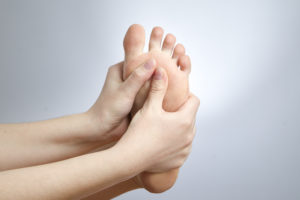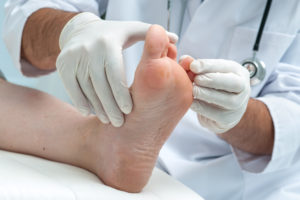Posted by slomotionshoes | 7 July, 2016
Athlete’s Foot Prevention
Fungal infections of the skin are very common. Tinea Pedis, or Athletes foot, is a common fungal infection of the foot that affects both children and adults. Athletes foot also affects athletes and non-athletes. Having a basic understanding of what Athletes foot is and how to prevent it may save you from dealing with this pesky infection.
What is Athlete's Foot?

Athletes foot is a superficial skin infection caused by a fungus (Trichophyton). Since fungi thrive in warm, dark, and humid locations, the foot provides the perfect environment for growth. Most often, athletes foot affects the skin between the toes and soles of the feet. However, it may also affect the toenails, palms, and other areas of the body.
Signs and symptoms:
Athletes foot presents as a dry, scaly, or flaky rash. It may also have small vesicles or blisters. You are likely to experience associated itching and burning in the affected areas. Athletes foot is very contagious and spreads through contact, contaminated floors, towels, and clothing.
Diagnosis:
Athletes foot is usually self diagnosed based on common symptoms. However, if necessary, it is confirmed by microscopy and analysis of skin scrapings.
Treatment:
Athletes foot is easily treated with over the counter antifungal creams, sprays, and powders. Utilizing over the counter products with preventative measures is effective, however, a prescription may be required for more extensive cases.
Athlete's Foot Prevention

The key to Athletes foot prevention is ensuring your feet stay as clean and dry as possible. Always allowing your feet to “breath” coupled with good foot hygiene may prevent you from dealing with this pesky condition. Specific preventative measures include:
- Change socks at least daily and do not share socks with others. Wear cotton, silk, or wool socks rather than socks made of synthetic material.
- Wash your feet at least once daily.
- Keep your feet dry, especially between the toes.
- Wear well ventilated shoes. Shoes made of leather or canvas provide better ventilation than shoes made of synthetic materials.
- Give your feet time to “breath”. Remove shoes when possible utilizing loose fitting shoes, sandals, or slippers around the house and work.
- Alternate wearing shoes when possible. Give your shoes time to air out between use.
- Never go barefoot in high traffic public places including swimming pools, saunas, public showers. Always wear shower shoes or sandals
- Apply powder to your feet daily or when you exercise. Powders with with antifungal additives are more effective at Athletes foot prevention. Powder also reduces friction meaning less sweat.
- Dry your body from the top down. Making this a habit helps prevent spreading athletes foot to other areas of the body.
Sources:
1Elewski BE, Hughey LC, Sobera JO, Hay R. Fungal diseases. In: Bolognia JL, Jorizzo JL, Schaffer JV, eds. Dermatology. 3rd ed. Philadelphia, PA: Elsevier Saunders; 2012: Chap 77.

